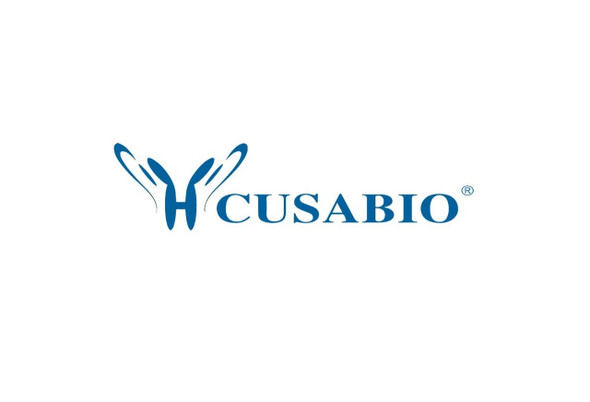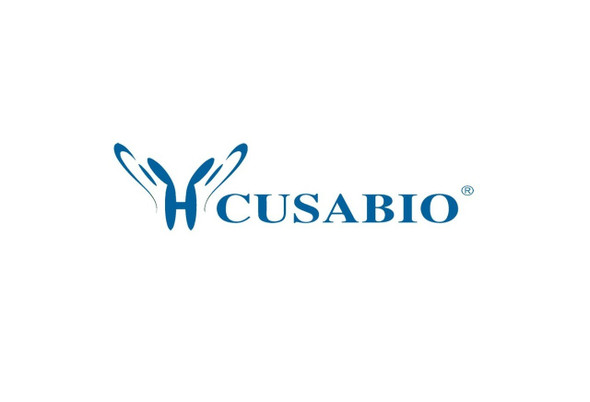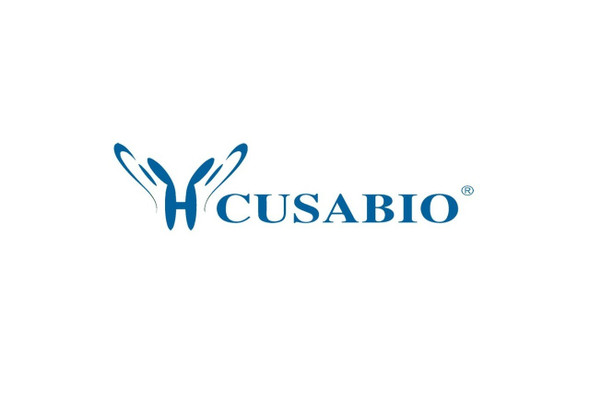Cusabio Human Recombinants
Recombinant Human Serine protease HTRA1 (HTRA1) | CSB-EP835695HU
- SKU:
- CSB-EP835695HU
- Availability:
- 3 - 7 Working Days
Description
Recombinant Human Serine protease HTRA1 (HTRA1) | CSB-EP835695HU | Cusabio
Alternative Name(s): High-temperature requirement A serine peptidase 1 L56 Serine protease 11
Gene Names: HTRA1
Research Areas: Signal Transduction
Organism: Homo sapiens (Human)
AA Sequence: QLSRAGRSAPLAAGCPDRCEPARCPPQPEHCEGGRARDACGCCEVCGAPEGAACGLQEGPCGEGLQCVVPFGVPASATVRRRAQAGLCVCASSEPVCGSDANTYANLCQLRAASRRSERLHRPPVIVLQRGACGQGQEDPNSLRHKYNFIADVVEKIAPAVVHIELFRKLPFSKREVPVASGSGFIVSEDGLIVTNAHVVTNKHRVKVELKNGATYEAKIKDVDEKADIALIKIDHQGKLPVLLLGRSSELRPGEFVVAIGSPFSLQNTVTTGIVSTTQRGGKELGLRNSDMDYIQTDAIINYGNSGGPLVNLDGEVIGINTLKVTAGISFAIPSDKIKKFLTESHDRQAKGKAITKKKYIGIRMMSLTSSKAKELKDRHRDFPDVISGAYIIEVIPDTPAEAGGLKENDVIISINGQSVVSANDVSDVIKRESTLNMVVRRGNEDIMITVIPEEIDP
Source: E.coli
Tag Info: N-terminal 6xHis-SUMO-tagged
Expression Region: 23-480aa
Sequence Info: Full Length of Mature Protein
MW: 65 kDa
Purity: Greater than 90% as determined by SDS-PAGE.
Relevance: Serine protease with a variety of targets, including Extracellular domain matrix proteins such as fibronectin. HTRA1-generated fibronectin fragments further induce synovial cells to up-regulate MMP1 and MMP3 production. May also degrade proteoglycans, such as aggrecan, decorin and fibromodulin. Through cleavage of proteoglycans, may release soluble FGF-glycosaminoglycan complexes that promote the range and intensity of FGF signals in the Extracellular domain space. Regulates the availability of insulin-like growth factors (IGFs) by cleaving IGF-binding proteins. Inhibits signaling mediated by TGF-beta family members. This activity requires the integrity of the catalytic site, although it is unclear whether TGF-beta proteins are themselves degraded. By acting on TGF-beta signaling, may regulate many physiological processes, including retinal angiogenesis and neuronal survival and maturation during development. Intracellularly, degrades TSC2, leading to the activation of TSC2 downstream targets.
Reference: "Primary structure of a putative serine protease specific for IGF-binding proteins."Zumbrunn J., Trueb B.FEBS Lett. 398:187-192(1996)
Storage: The shelf life is related to many factors, storage state, buffer ingredients, storage temperature and the stability of the protein itself. Generally, the shelf life of liquid form is 6 months at -20?/-80?. The shelf life of lyophilized form is 12 months at -20?/-80?.
Notes: Repeated freezing and thawing is not recommended. Store working aliquots at 4? for up to one week.
Function: Serine protease with a variety of targets, including extracellular matrix proteins such as fibronectin. HTRA1-generated fibronectin fragments further induce synovial cells to up-regulate MMP1 and MMP3 production. May also degrade proteoglycans, such as aggrecan, decorin and fibromodulin. Through cleavage of proteoglycans, may release soluble FGF-glycosaminoglycan complexes that promote the range and intensity of FGF signals in the extracellular space. Regulates the availability of insulin-like growth factors (IGFs) by cleaving IGF-binding proteins. Inhibits signaling mediated by TGF-beta family members. This activity requires the integrity of the catalytic site, although it is unclear whether TGF-beta proteins are themselves degraded. By acting on TGF-beta signaling, may regulate many physiological processes, including retinal angiogenesis and neuronal survival and maturation during development. Intracellularly, degrades TSC2, leading to the activation of TSC2 downstream targets.
Involvement in disease: Macular degeneration, age-related, 7 (ARMD7); Cerebral arteriopathy, autosomal recessive, with subcortical infarcts and leukoencephalopathy (CARASIL); Cerebral arteriopathy, autosomal dominant, with subcortical infarcts and leukoencephalopathy, 2 (CADASIL2)
Subcellular Location: Cell membrane, Secreted, Cytoplasm, cytosol
Protein Families: Peptidase S1C family
Tissue Specificity: Widely expressed, with strongest expression in placenta (at protein level). Secreted by synovial fibroblasts. Up-regulated in osteoarthritis and rheumatoid arthritis synovial fluids and cartilage as compared with non-arthritic (at protein level).
Paythway:
Form: Liquid or Lyophilized powder
Buffer: If the delivery form is liquid, the default storage buffer is Tris/PBS-based buffer, 5%-50% glycerol. If the delivery form is lyophilized powder, the buffer before lyophilization is Tris/PBS-based buffer, 6% Trehalose, pH 8.0.
Reconstitution: We recommend that this vial be briefly centrifuged prior to opening to bring the contents to the bottom. Please reconstitute protein in deionized sterile water to a concentration of 0.1-1.0 mg/mL.We recommend to add 5-50% of glycerol (final concentration) and aliquot for long-term storage at -20?/-80?. Our default final concentration of glycerol is 50%. Customers could use it as reference.
Uniprot ID: Q92743
HGNC Database Link: HGNC
UniGene Database Link: UniGene
KEGG Database Link: KEGG
STRING Database Link: STRING
OMIM Database Link: OMIM










